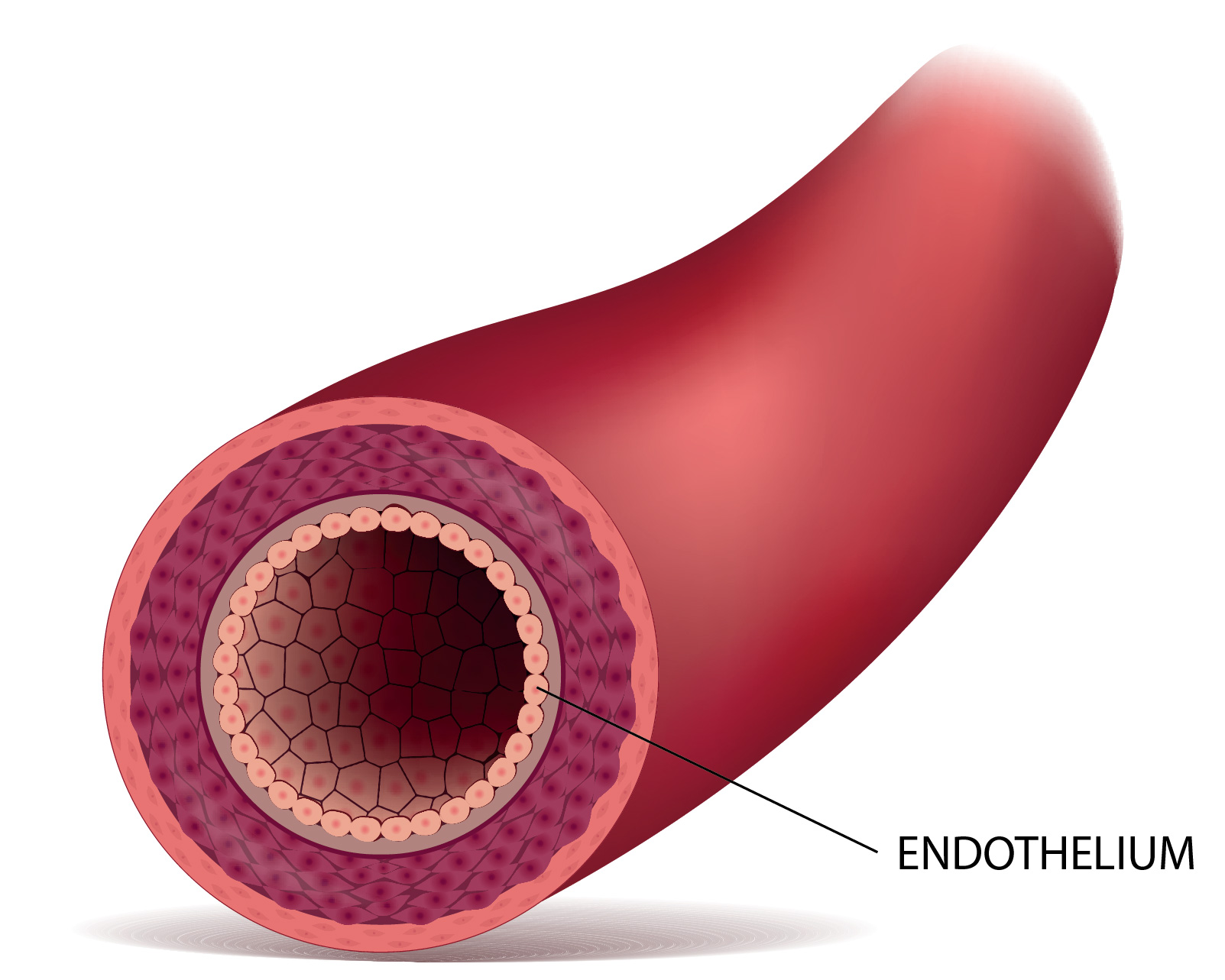The endothelium is a thin single layer of cells that lines the inner surface of the heart and all blood vessels of the entire circulatory system. It is a very active layer and ultimately determines how much blood gets to the organs. The endothelium acts very much like its own endocrine organ because it constantly transmits and receives chemical signals that control conditions in the blood stream. It is continuously adjusting and controlling:
- Vessel dilation and constriction, which largely regulates blood pressure
- Clotting and anti-clotting components
- Nutrients and other materials that pass back and forth between the blood stream and underling tissues
- Inflammatory processes
- Immunological processes
If the endothelium loses its ability to carefully control these functions, the result is called endothelial dysfunction.
Endothelial dysfunction can be defined as impaired endothelium-dependent relaxation due to a decrease in the bioavailability of the important signaling molecule, nitric oxide (NO).
In other words, a reduction in the levels of nitric oxide in blood vessel walls. The nitric oxide signaling molecule is a gas that is produced by the metabolism of the amino acid L-arginine. Reduced levels of nitric oxide also leads to an increase in the permeability of the vessel walls allowing the entry of damaging lipoproteins. Endothelial dysfunction is considered one of the principal mechanisms in atherosclerotic disease.
Atherosclerotic lesions always start with endothelial dysfunction.
It is important that we do our best to maintain the health of this vital system.
And luckily, there are many good steps we can take.



